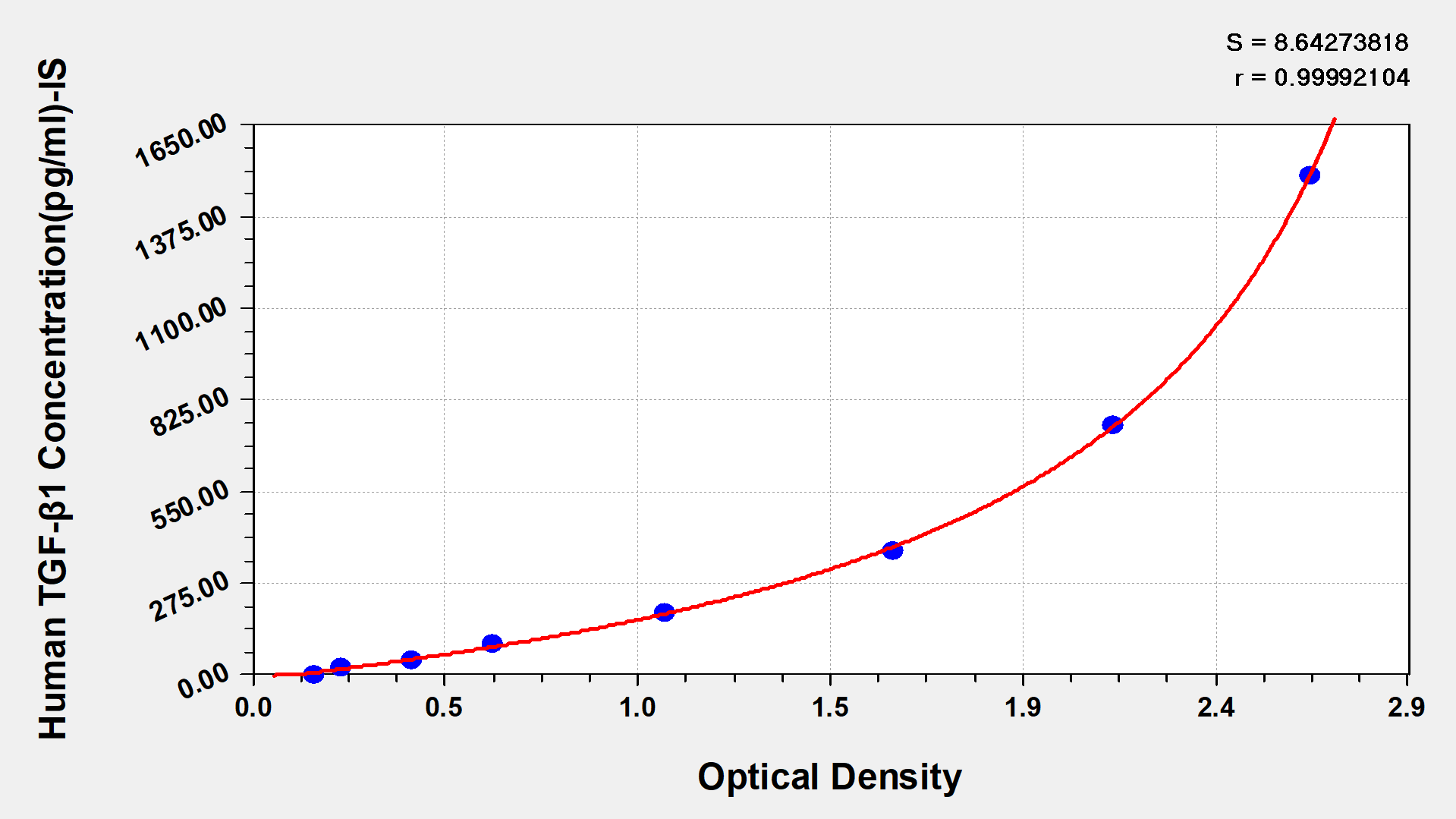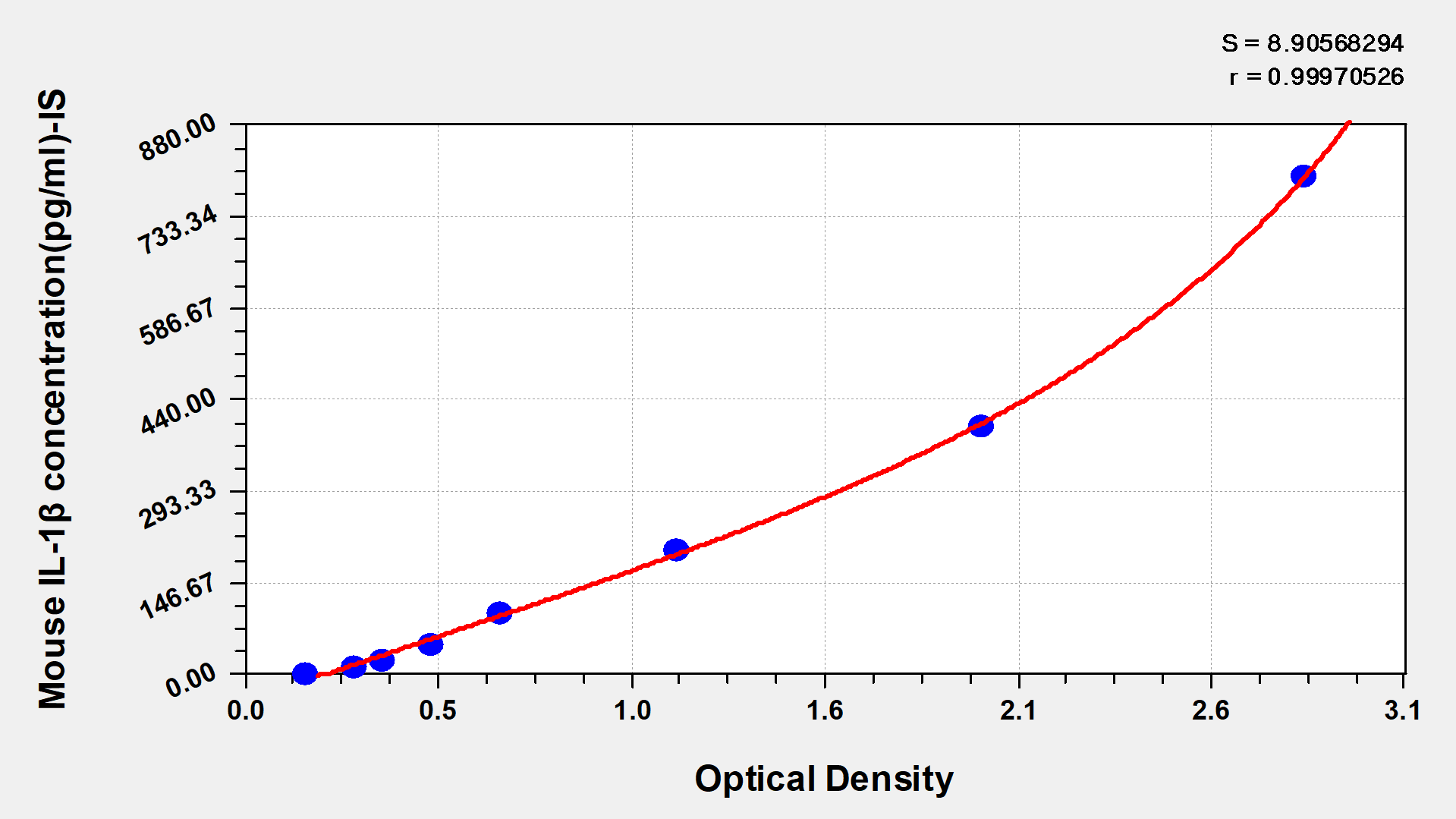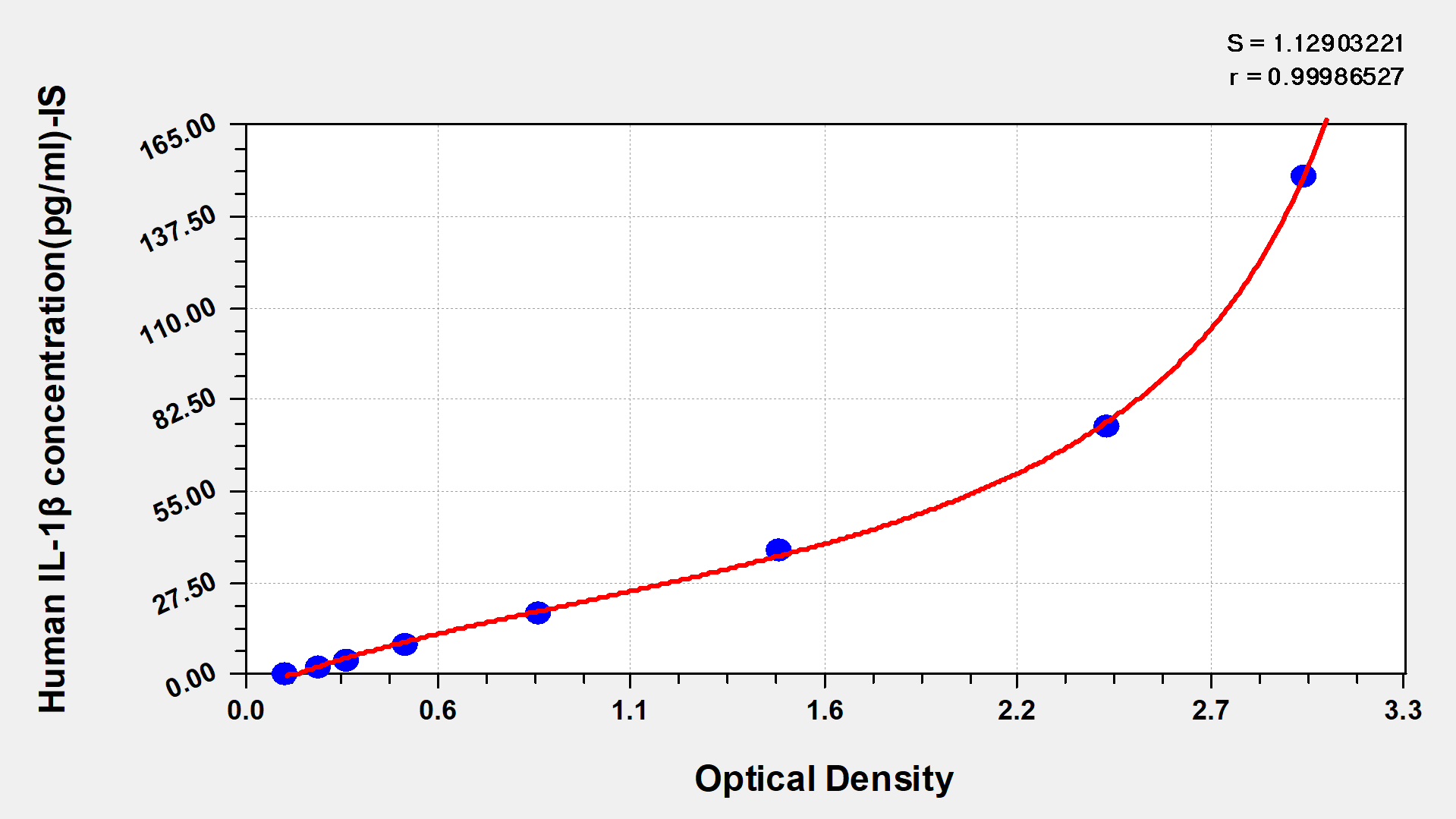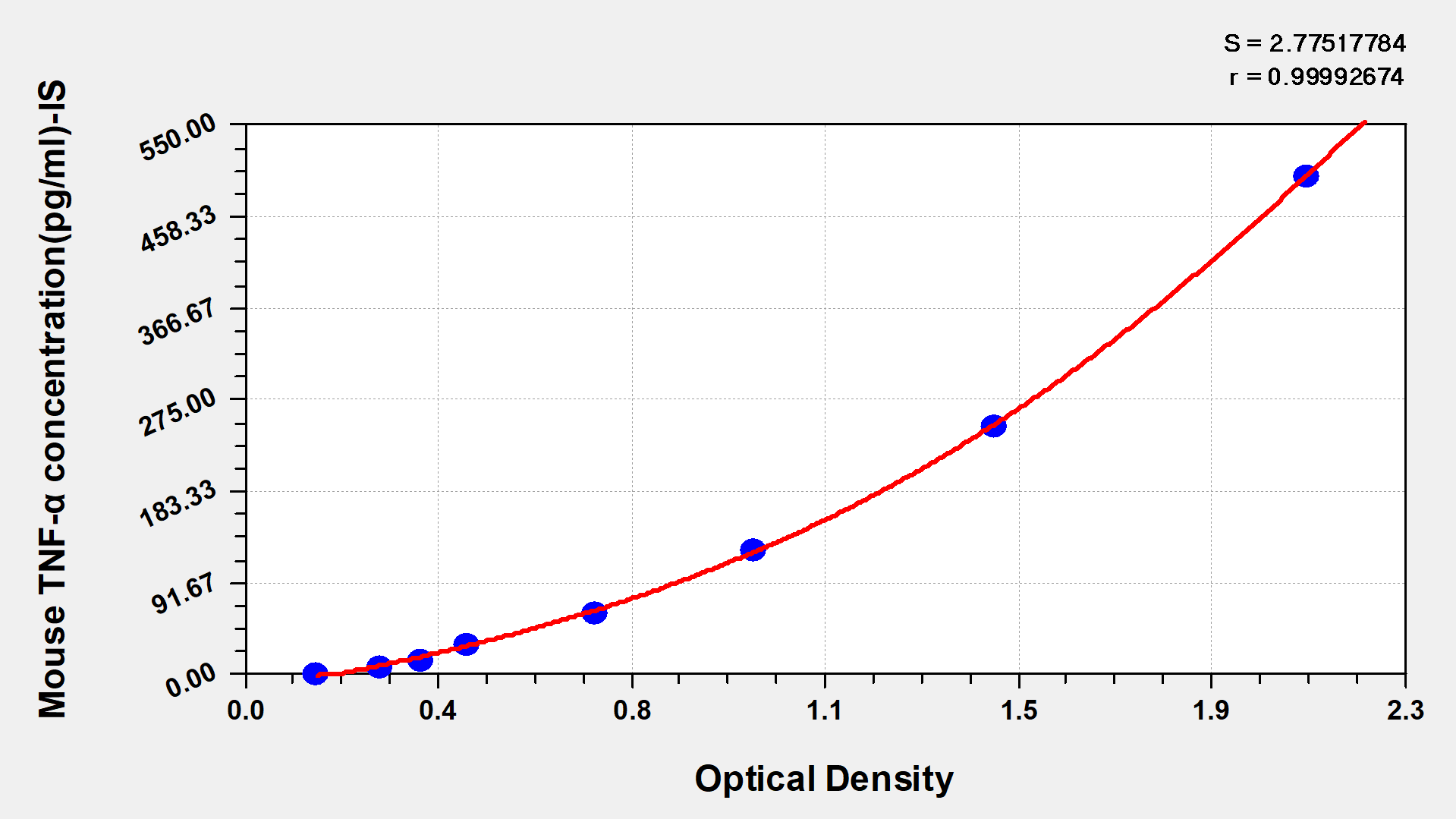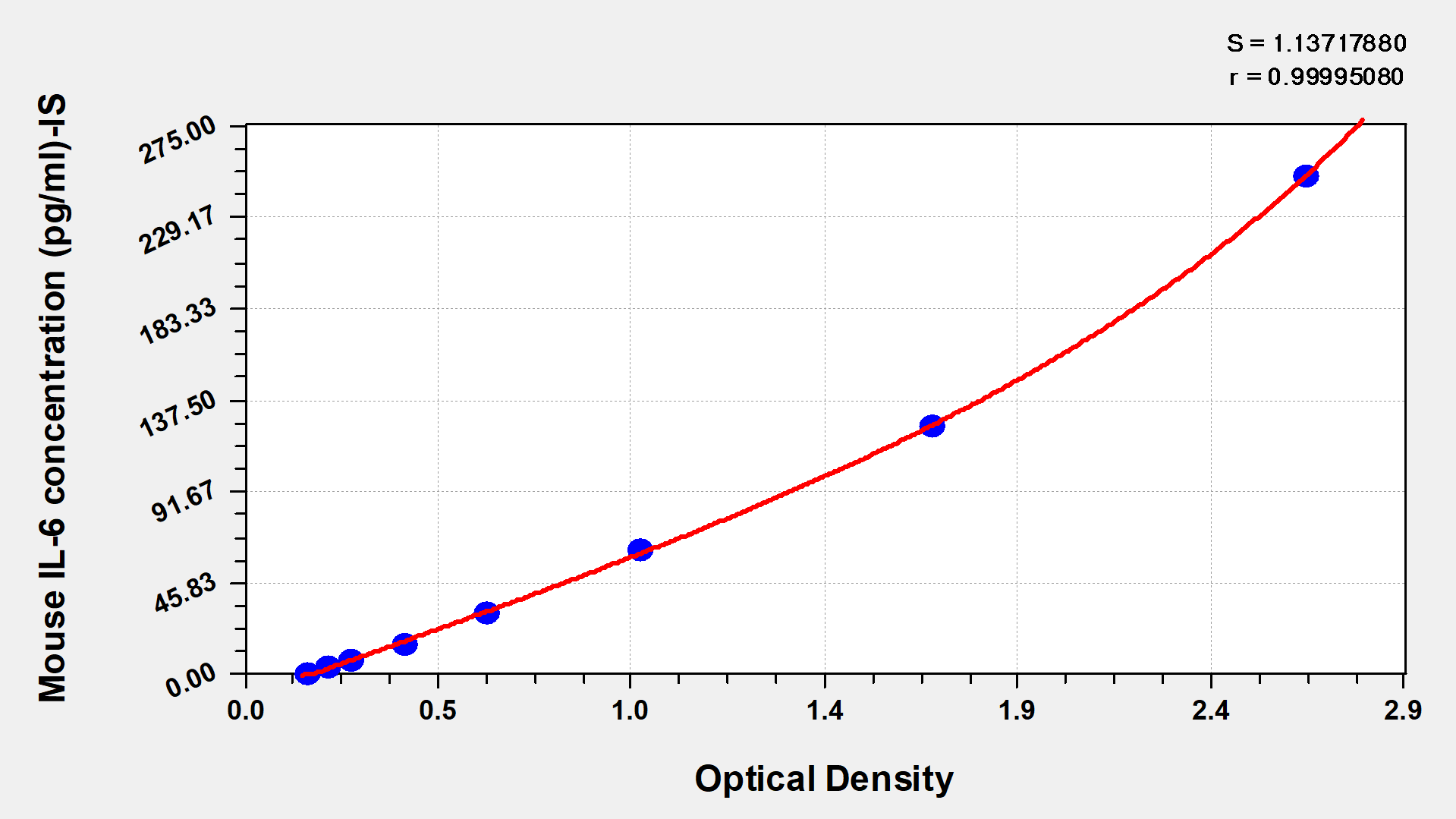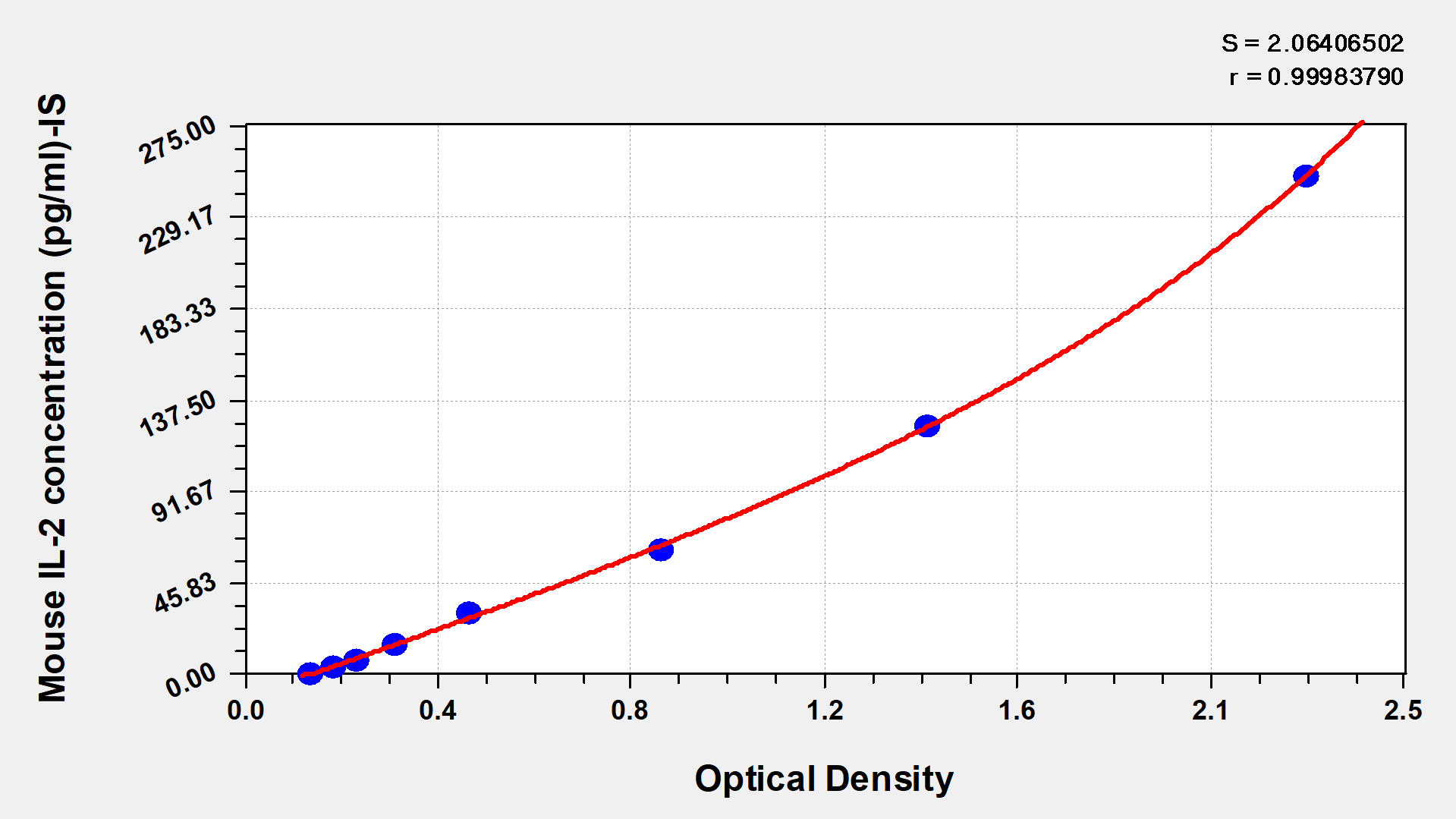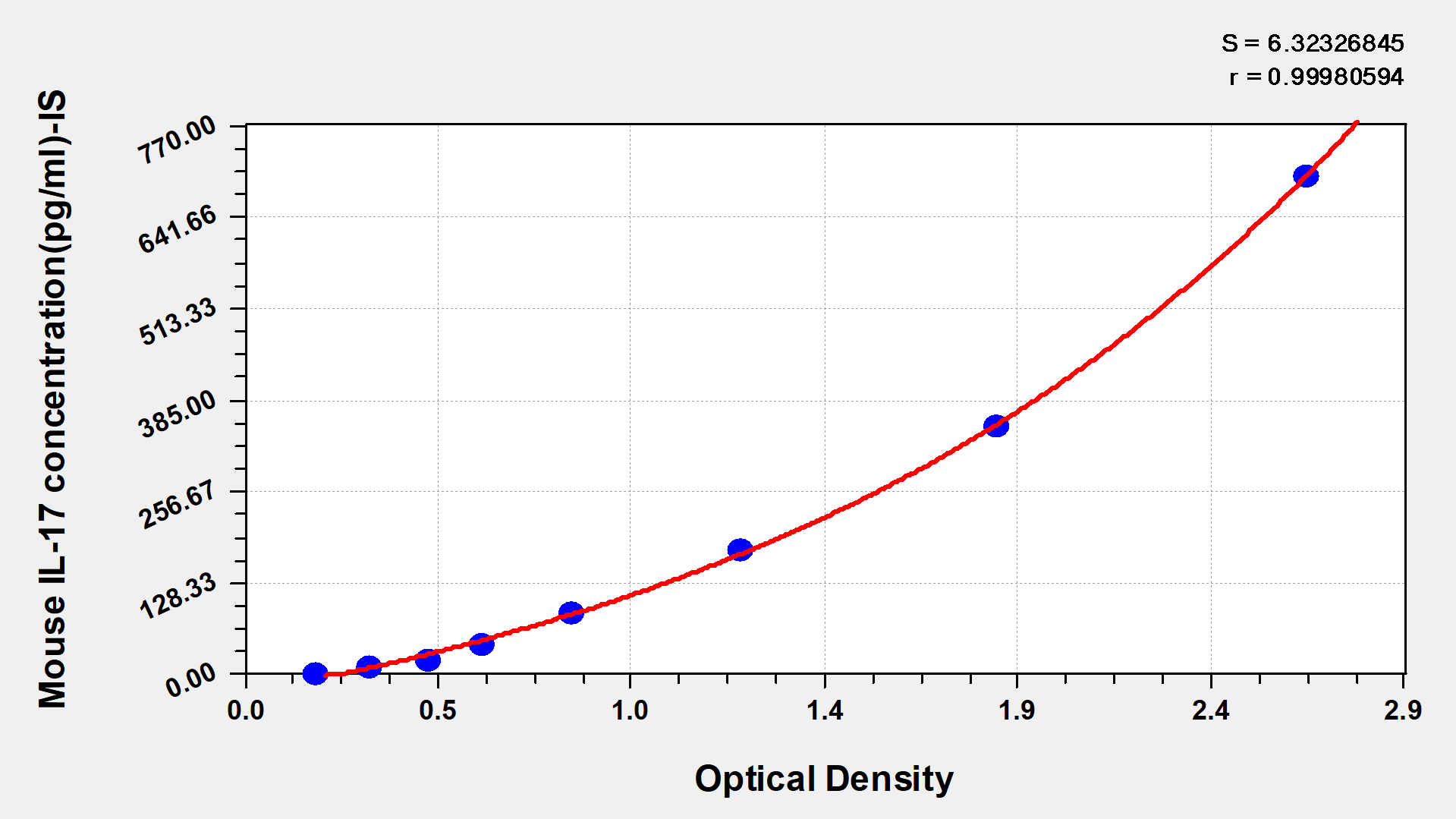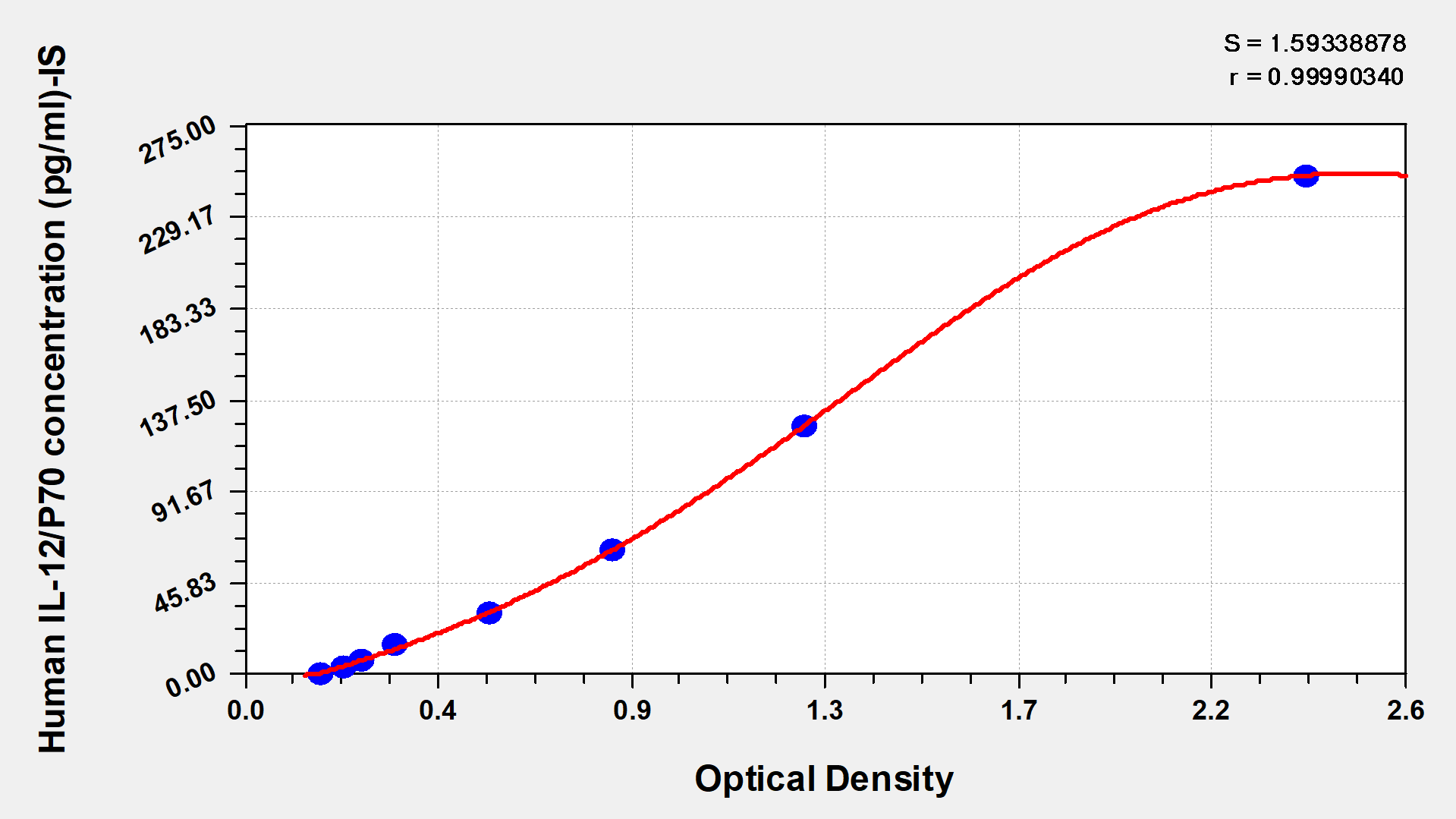Mouse E-Cadherin,E-Cad ELISA Kit
-
中文名称:小鼠E钙粘着蛋白/上皮性钙黏附蛋白(E-Cad)酶联免疫试剂盒
-
货号:CSB-E04520m
-
规格:96T/48T
-
价格:¥3800/¥2500
-
其他:
产品详情
-
产品描述:小鼠E钙粘着蛋白/上皮性钙黏附蛋白(E-Cad)酶联免疫试剂盒(CSB-E04520m)检测样本中的CDH1含量。CDH1是一种重要靶点。它是一种钙黏蛋白,在细胞黏附等过程中起关键作用。其异常表达与肿瘤发生、发展及转移密切相关。研究机制围绕其在肿瘤中表达变化、与上下游信号通路相互作用等,以探索其在肿瘤诊疗中的应用价值。本试剂盒适用于细胞生物学、肿瘤机制研究、发育生物学等领域的体外实验,为探索上皮 - 间质转化(EMT)过程及细胞粘附调控机制提供可靠工具。本品仅用于科研,不用于临床诊断,产品具体参数及操作步骤详见产品说明书。
-
别名:Cdh1; Cadherin-1; ARC-1; Epithelial cadherin; E-cadherin; Uvomorulin; CD antigen CD324
-
缩写:
-
Uniprot No.:
-
种属:Mus musculus (Mouse)
-
检测范围:Request Information
-
灵敏度:Request Information
-
反应时间:1-5h
-
样本体积:50-100ul
-
检测波长:450 nm
-
研究领域:Cancer
-
货期:3-5 working days
相关产品
靶点详情
-
功能:Cadherins are calcium-dependent cell adhesion proteins. They preferentially interact with themselves in a homophilic manner in connecting cells; cadherins may thus contribute to the sorting of heterogeneous cell types. CDH1 is involved in mechanisms regulating cell-cell adhesions, mobility and proliferation of epithelial cells. Has a potent invasive suppressor role. It is a ligand for integrin alpha-E/beta-7.; E-Cad/CTF2 promotes non-amyloidogenic degradation of Abeta precursors. Has a strong inhibitory effect on APP C99 and C83 production.; (Microbial infection) Does not function as a receptor for L.monocytogenes internalin A (InlA); mutating a single surface-exposed residue confers receptor activity to this protein and promotes uptake of the bacteria.
-
基因功能参考文献:
- O-GlcNAcylation of CDH1 is associated with tumorigenicity of colorectal cancer. PMID: 29391154
- Data identify an E-cadherin-dependent mechanical circuit that integrates adhesion, contractile forces and biochemical signaling to drive the polarized organization of junctional tension necessary to build an in vivo epithelial barrier. PMID: 29093447
- E-cadherin expression is reduced in prenatal pancreatic islets of Bmpr1a-deleted mice. PMID: 28922976
- Real-time PCR showed E-cad mRNA decreased in SCC25 while increased in RAW 264.7 of the indirect cell co-culture model, and immunofluoresence (IF) observed the evident switch of E-cad staining from SCC25 to RAW 264.7 PMID: 28656299
- Study found that E-cad is crucial for proper morphogenesis and cell movements during gastrulation indicating that a tight spatio-temporal control of cadherin expression is mandatory for morphogenesis independent of their function in tissue sorting. PMID: 27217206
- NAC1 downregulates the E-cadherin repressor ZEB1 directly via transcriptional repression. PMID: 28781078
- IGF-II-mediated loss of E-cadherin is central in developing hepatomegaly in mice and abnormal cell growth in the hepatoma cell line PMID: 27486970
- Overall, hypoxia-induced activation of Twist/miR-214/E-cadherin axis is involved in the EMT of TECs, and anti-miR-214 may be an attractive strategy to ameliorate the progression of renal fibrosis. PMID: 29277613
- Study shows that over time, epithelial tumor cells undergo epithelial state to a mesenchymal-like state changes (including loss of E-cadherin expression) during primary tumor growth and E-cadherin is re-expressed in metastatic tumor cells. PMID: 27270319
- Neutrophil elastase has the capacity to cleave E-cad and interfere with its cell-cell adhesion function in acutely injured lung epithelium. PMID: 27751187
- We describe a mouse model in which inducible deletion of E-cadherin in prostate luminal cells results in their apoptotic cell death by anoikis, in the absence of phenotypic effects in the surrounding stroma PMID: 27117783
- Our results provide a mechanistic explanation for the spontaneous emergence of pluripotent cells from GSC cultures; namely, rare GSCs upregulate CDH1 and initiate MET, processes normally kept in check by ZEB1 and TGF-beta signaling, thereby ensuring germ cells are protected from aberrant acquisition of pluripotency. PMID: 28065642
- PTEN loss in E-cadherin-deficient mouse mammary epithelial cells rescues apoptosis and results in development of classical invasive lobular carcinoma. PMID: 27524621
- Low CDH1 expression is associated with Gastric Tumorigenesis. PMID: 28760854
- Ilk and ELMO2 modulate recycling endosomes in keratinocytes undergoing intercellular adhesion mediated through cell-cell contacts, including E-cadherin-based adherens junctions. PMID: 27627840
- JNK signaling, which is inversely correlated with WNT4, plays an important role in perinatal germline cyst breakdown and primordial follicle formation by regulating E-cadherin junctions between oocytes in mouse ovaries. PMID: 27013242
- The expression level of E-cadherin protein was significantly decreased in fibrotic livers. PMID: 27538444
- We conclude that p120ctn is not only an adaptor and regulator of E-cadherin, but is also indispensable for proper lineage commitment. PMID: 27556156
- The reduction in tumor growth in fat1 mice compared with wildtype controls may have been associated, in part, to the: i) Increased expression of Ecadherin and the reduced expression of its transcriptional repressors. PMID: 27573698
- These observations suggest that the overexpression of CatE interferes with neuronal differentiation of P19 cells through an impairment of cell aggregate formation, possibly through proteolytic degradation of N-cadherin. PMID: 27116544
- expression not significantly correlated with tumor metastasis PMID: 27072356
- E-cadherin-mediated cell-cell contacts can modulate osteoclast-specific gene expression and prompt differentiating osteoclast precursors toward migratory and fusion activities. PMID: 26959175
- These results provide a new mechanism by which LXA4 inhibits LPS-induced ALI through Nrf2-mediated E-cadherin expression PMID: 26845617
- Suggest that E-caherin maintains the stemness of neural stem cells and reduces cells migration. PMID: 26823740
- Demonstrate that HBx-HCCR-E-cadherin regulation pathway might play an important role in HBV-induced hepatocarcinogenesis. PMID: 26470691
- E-cadherin expression regulates inflammatory mediators in macrophages. PMID: 26226941
- Increased expression of E-cadherin binds to and sequesters beta-catenin away from downstream Wnt signaling proteins. PMID: 26921506
- The synergistic action of cadherins generates mosaic pattern, which cannot be achieved by a single mechanism. PMID: 26929452
- Results suggest a regulatory function of E-cadherin that modulates Nrg1 signaling and promotes Schwann cell myelin formation PMID: 25988855
- During submandibular gland development, a Hippo pathway effector, TAZ, becomes increasingly phosphorylated and associated with E-cadherin and alpha-catenin, consistent with the activation of Hippo signaling. (Hippo) PMID: 24080911
- Vangl2 regulates E-cadherin in epithelial cells. PMID: 25373475
- Important insights into E-cadherin's role in cell adhesion, proliferation and differentiation. [Review] PMID: 25449798
- Pkd1 mutation or deletion leads to the activation of Galpha12, which promotes the maturation of ADAM10 that increases the shedding of E-cadherin in kidney epithelial cells. PMID: 25492927
- Our results provide novel insights into identification of novel distal enhancer elements regulating E-cadherin expression PMID: 25652130
- The results indicate that absence of CDH1 and TP53 in endometrial cells initiates chronic inflammation, promotes tumor microenvironment development following the recruitment of macrophages and promotes aggressive endometrial carcinomas. PMID: 24998851
- Zonula occludens-1, occludin and E-cadherin expression and organization in salivary glands PMID: 25248927
- may play an important role in the pathogenesis of ulcerative colitis PMID: 25634675
- p19(Arf) (p14(ARF) in human) stabilizes Slug to inhibit E-cadherin in prostate cancer mouse models. PMID: 24910389
- that MAD2B may play an important role in high glucose-mediated podocyte injury of diabetic nephropathy via modulation of Cdh1, cyclin B1, and Skp2 expression PMID: 25651564
- The antimetastatic signaling pathways driven by E-cadherin and Smad4. PMID: 24784840
- E-cadherin can replace N-cadherin during secretory-stage enamel development. PMID: 25014356
- Loss of CDH1 is associated with promotes hepatocellular carcinogenesis. PMID: 24840851
- Our findings establish Six2 as a regulator of metastasis in human breast cancers and demonstrate an epigenetic function for SIX family transcription factors in metastatic progression through the regulation of E-cadherin. PMID: 25348955
- E-cad can act in synergy with hepatic growth factors and facilitate the early-stage formation of hepatic tissues through down-regulating Wnt/beta-catenin signaling and delaying epithelial-mesenchymal transition. PMID: 24266635
- The diferentially remodeled microenvironment in solid and ascitic tumors by sequential immunohistochemistry and flowcytometric analysis of E-cdaherin, N-cadherin, vimentin, and cytokeratin along with angiogenesis and metastasis, is reported. PMID: 23861106
- These results identified the apical endfoot as the central site of active Notch signaling to securely prohibit inappropriate differentiation of neural progenitors. PMID: 24715457
- this study proposes a novel mechanism whereby Cdh1 promoter methylation restricts Cdh1 abundance in developing prostate epithelium to create a permissive environment for prostatic bud outgrowth. PMID: 24503032
- E-cadherin and Rho signaling cooperate to ensure proper ZA architecture and function in MCF7 cells. PMID: 23643492
- Data show that Snail1 efficient repression and binding to E-cadherin promoter as well as epithelial-to-mesenchymal transition (EMT)-inducing ability require intact ZF1 and ZF2, while for Snail2, either ZF3 or ZF4 is essential for those functions. PMID: 24297167
- E-cadherin plays critical roles in maintaining homeostasis and suppressing carcinogenesis in the liver in a knockout mouse model PMID: 24395807
显示更多
收起更多
-
亚细胞定位:Cell junction, adherens junction. Cell membrane; Single-pass type I membrane protein. Endosome. Golgi apparatus, trans-Golgi network.
-
组织特异性:Expressed in inner and outer pillar cells of the organ of Corti (at protein level). Non-neural epithelial tissues.
-
数据库链接:
Most popular with customers
-
Human Transforming Growth factor β1,TGF-β1 ELISA kit
Detect Range: 23.5 pg/ml-1500 pg/ml
Sensitivity: 5.8 pg/ml
-
-
-
Mouse Tumor necrosis factor α,TNF-α ELISA Kit
Detect Range: 7.8 pg/ml-500 pg/ml
Sensitivity: 1.95 pg/ml
-
-
-
-



